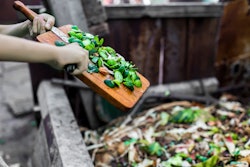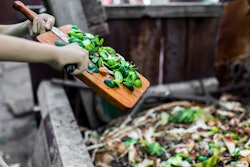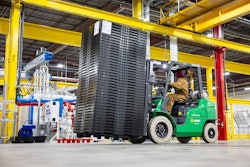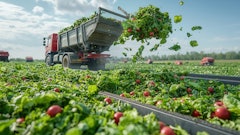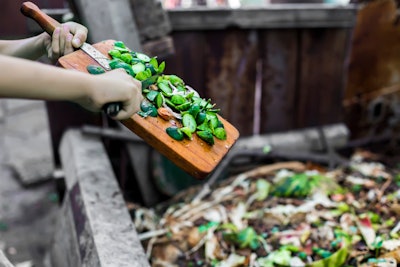
It’s no secret that hunger still remains a major social issue today, affecting nearly 25% of Americans. Nearly 63 million tons of food was wasted in 2023, with manufacturing being the fourth largest source of waste. Sadly, only 2.4% of edible food was donated in 2023, with the greatest portion coming from grocery retail, according to ReFed.
The food supply chain and logistics industry continues to be a significant contributor to food loss and food waste, which can occur at varying stages of the food supply chain as it is passed from producers to consumers. Food waste significantly impacts the "nutrient economy" by representing a loss of nutrients that could be utilized for human consumption or agricultural purposes, but instead is left in the dumpsters and landfills.
Why should you care about the nutrient economy? The large scale of food loss and waste doesn’t just harm human health and nutrition, but also our economy and the environment. Wasted food takes a major financial toll, costing the global economy more than $1 trillion every year. If this current trend continues, food loss and waste will double by 2050.
3 pathways to avoid waste
When food is wasted, so are all the resources that went into producing, processing, distributing and preparing that food. Reducing wasted food is a positive triple threat as it's good for the environment, our community and economy.
For suppliers and distributors, here are key ways to positively contribute to the circular nutrient economy and prevent food waste:
● Upcycle to new products. This presents a prime opportunity as this takes place at the production and manufacturing stage of the food supply chain in which edible parts of food as well as less desirable scraps can be upcycled into new food products.
● Turn into animal feed. Diverting food scraps to animal feed is an environmentally friendly way to reduce food waste while supporting local farmers. It often requires processing such as cooking, drying or turning into a slurry.
● Redistribute surplus food. Donating food is one of the most preferred ways to ensure that it doesn’t go wasted. From food donors to restaurants and grocery stores, surplus food can be generated from across the food supply chain.
Using smart technology to feed people in need
Choosing a green technology company to partner with on your journey to prevent food waste is vital to a company’s sustainability goals and success. There are a variety of options to choose from, and it’s vital to know what you’re getting into when you pick your food rescue software to advance your business’ food waste prevention outcomes.
Check for the following attributes in a food rescue software company to ensure a long-lasting partnership:
● Connect locally: Many food rescue software platforms have partnerships with food rescue organizations that can pick up excess food and distribute it to those in need. Partner with a reputable vendor that connects you directly to community nonprofits, food banks and rescue organizations with no middleman.
● Avoid donation dumping: Not all donations are created equal, and large amounts of inedible foods can burden nonprofits. Work with a tech provider that gives nonprofits the ability to select donations that match their needs and capacity.
● Stay compliant: Donate with ease with a green tech company that is compliant with many food waste policies across the United States, while driving efficiencies and producing numerous cost savings.
● Track excess food inventory: Collaborate with a food rescue partner that allows your business to track excess food inventory in real-time, making it easier to identify when you have excess food that can be donated. Without accurate data and an efficient tracking system data, efforts to prevent food waste can be ineffective.
● Reduce food waste in production: Get help identifying areas in your production process where food waste is occurring and implement strategies to reduce it. Finding smart green tech solutions is pivotal for creating a more sustainable future for our planet.
● Manage costs and produce savings: Food waste apps help manage costs for suppliers and distributors by efficiently tracking and analyzing food waste data. Look for apps that have user-friendly interfaces, free and low-cost subscription options and predictive modeling and forecasting.
To effectively tackle food loss and waste, suppliers and distributors must ensure they have programs and technology in place that enables them to easily track and manage excess food, connect with food rescue organizations and implement strategies to reduce food waste in their production process.
With the constant policy and funding shifts of food rescue and SNAP programs, it’s becoming more critical for food donors, corporations, suppliers, restaurants and grocers to step up to help fill the gap in local communities across the United States. Make the commitment today to reduce the harmful environmental impacts of food production while advancing food security for many.





